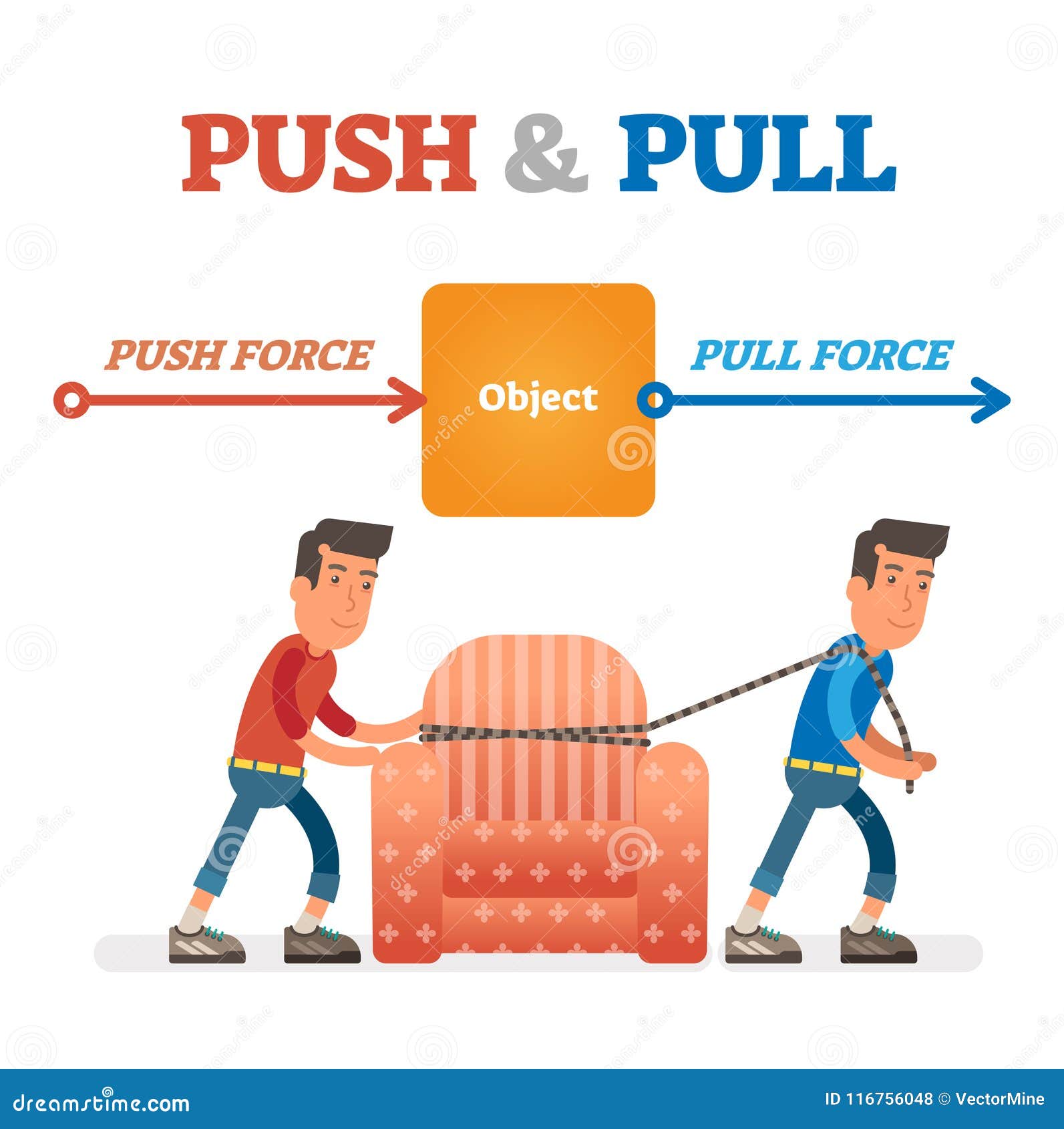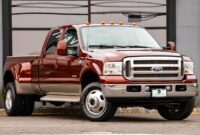Pull Trucks For Sale: Your Ultimate Guide to Entering the World of Extreme Power sale.truckstrend.com
The roar of a thousand-plus horsepower engine, the scent of burning diesel and rubber, the ground-shaking tremor as a modified beast digs its tires into the dirt, slowly but surely dragging an impossibly heavy sled down the track – this is the exhilarating world of truck pulling. For enthusiasts and competitors alike, the heart of this sport lies in the specialized machines that make it possible: pull trucks. These aren’t your everyday pickups; they are meticulously engineered, heavily customized marvels of automotive power and strength, built for one purpose: to pull.
If you’re looking to enter this high-octane arena, or perhaps upgrade your current setup, understanding the market for pull trucks for sale is paramount. Buying a pre-built pull truck can be a fantastic way to jump into the sport, saving countless hours and potentially significant money compared to building one from scratch. However, it’s a specialized market with unique considerations that demand a well-informed approach. This comprehensive guide will equip you with the knowledge needed to navigate the world of pull trucks for sale, ensuring you make a purchase that fuels your passion and propels you to victory.
Pull Trucks For Sale: Your Ultimate Guide to Entering the World of Extreme Power
What Exactly is a Pull Truck?
Before diving into the buying process, it’s crucial to understand what distinguishes a pull truck from any other vehicle. A pull truck is a highly modified, purpose-built machine designed to compete in truck and tractor pulling events. The goal is to pull a heavy, weighted sled as far as possible down a dirt track. To achieve this, these trucks undergo extreme transformations:
- Massive Horsepower: Engines are the heart of a pull truck, often producing anywhere from 1,000 to over 3,000 horsepower. This is achieved through extensive modifications, including oversized turbochargers, custom fuel injection systems, reinforced internal components, and specialized cylinder heads. Both diesel and gasoline engines are used, depending on the class.
- Heavy-Duty Drivetrain: The immense power generated must be efficiently transferred to the ground. This requires specialized transmissions (often multi-speed automatics or manual "pulling" transmissions like ProFab or SCS units), heavy-duty transfer cases, and incredibly strong custom axles (often Rockwells or planetary axles from military vehicles/heavy equipment) designed to withstand extreme torque.
- Reinforced Chassis and Suspension: The original frame is heavily reinforced or entirely replaced with a custom-built chassis to handle the immense stresses of pulling. Suspension systems are highly specialized, often featuring solid setups, ladder bars, or sophisticated four-link designs to optimize traction and weight transfer.
- Weight Distribution: Strategic ballasting is crucial. Weights are often added to the front of the truck to prevent the front end from lifting excessively, ensuring maximum traction from the rear tires.
- Safety Features: Due to the extreme forces involved, safety is paramount. Roll cages, kill switches, driveshaft loops, fire suppression systems, and specialized seating are standard and often mandated by sanctioning bodies.
- Specialized Tires: Pulling tires are distinct, featuring aggressive, often hand-cut treads designed to dig into the dirt and maximize grip.

Pull trucks are categorized into various classes (e.g., Street Legal, Pro Stock, Super Stock, Modified, Unlimited) based on engine size, modifications allowed, weight limits, and other rules. Understanding these classes is the first step in identifying the right pull truck for your aspirations.
Why Buy a Pre-Built Pull Truck?
The appeal of finding pull trucks for sale lies in several significant advantages over building one from scratch:
- Time Savings: Building a competitive pull truck from the ground up can take years, involving countless hours of fabrication, engine building, and tuning. Buying pre-built allows you to get straight to the track.
- Cost Efficiency (Potentially): While initial outlay can be high, the total cost of parts, labor, and specialized tools to build a truck can often exceed the price of a used, already-built competitor. You’re leveraging someone else’s investment in R&D and fabrication.
- Proven Performance: A truck that has already competed successfully offers a track record. You can often see its past results, dyno sheets, and understand its capabilities.
- Expert Craftsmanship: Many pull trucks for sale have been built or maintained by experienced professionals or seasoned competitors, ensuring a high level of engineering and component quality.
- Immediate Entry: With a purchased truck, you can quickly get into the sport, learn the ropes, and refine your driving skills without the lengthy build process.
Key Considerations When Looking for Pull Trucks For Sale
Navigating the market requires a keen eye and a thorough understanding of what you’re looking at. Here are the critical factors to consider:
- Budget: Pull trucks range wildly in price. Set a realistic budget that includes not just the purchase price but also transportation, initial maintenance, necessary rule-compliance updates, and ongoing running costs (fuel, tires, breakage).
- Desired Class & Sanctioning Body Rules: This is perhaps the most critical factor. Different pulling associations (e.g., NTPA, state/regional associations) have varying rules for each class. A truck built for one class or association might not be legal for another without significant modifications. Know which class you want to compete in and thoroughly review the specific rulebook before looking at trucks.
- Engine Specifications:
- Type: Diesel or Gas? Each has its pros and cons in terms of power delivery, sound, and maintenance.
- Builder: Who built the engine? Reputable engine builders in the pulling world are known for reliability and performance.
- History: How many pulls are on the engine since its last rebuild? What are the internal components? Ask for dyno sheets.
- Drivetrain Components:
- Transmission: What type and brand? (e.g., Lenco, ProFab, SCS, Allison). How much power can it handle? When was it last serviced?
- Transfer Case: Is it a purpose-built pulling transfer case?
- Axles: What brand and type? (e.g., Rockwell, Clark, custom-built). Are they geared appropriately for pulling? Check for cracks, leaks, or signs of stress.
- Chassis and Suspension:
- Frame: Is it a heavily reinforced stock frame or a custom tube chassis? Look for quality welds and signs of fatigue.
- Suspension: Understand the design (ladder bars, 4-link, etc.) and ensure it’s suitable for your desired class.
- Weight Boxes: Are they integrated well and easily adjustable?
- Safety Features: Verify that all safety equipment (roll cage, kill switches, fire suppression, seat belts) meets the requirements of your chosen sanctioning body. This is non-negotiable.
- Documentation and History: Ask for build sheets, maintenance records, dyno graphs, and past competition results. A well-documented truck suggests a meticulous owner.
- Physical Inspection: Whenever possible, inspect the truck in person. Look for signs of damage, poor repairs, rust, or excessive wear. A pre-purchase inspection by a knowledgeable pulling mechanic is highly recommended.
Where to Find Pull Trucks For Sale
The market for pull trucks is niche but active. Here are the best places to look:
- Online Marketplaces: Websites like RacingJunk.com, PerformanceTruckAndTractor.com, and specialized Facebook groups dedicated to truck pulling are prime spots. General classifieds like eBay Motors or Craigslist might occasionally list them, but specialized sites are better.
- Sanctioning Body Websites/Forums: Organizations like the NTPA (National Tractor Pullers Association) or regional pulling associations often have classified sections on their websites or active forums where members buy and sell.
- Pulling Events: Attending actual truck pulling events is an excellent way to network, see trucks in action, and often find owners looking to sell or upgrade. Word-of-mouth is strong in this community.
- Specialized Builders/Dealers: Some shops specialize in building and selling pull trucks. They might offer used trucks as trade-ins or consignments.
- Word-of-Mouth: Connect with local pulling clubs, mechanics, and competitors. The pulling community is often tight-knit, and leads frequently come from within.
The Buying Process: Tips for a Successful Purchase
Once you’ve identified a potential truck, follow these steps:
- Initial Inquiry: Contact the seller with specific questions based on your research. Ask for more photos, videos of the truck in action, and detailed specifications.
- Verify Claims: If the seller provides dyno sheets or competition results, try to verify them if possible (e.g., cross-reference with event results).
- Physical Inspection: This cannot be stressed enough. If you’re serious, travel to see the truck. Bring a knowledgeable friend or mechanic if you’re not an expert yourself. Look for fresh paint covering damage, shoddy welds, or excessive wear.
- Ask for a Test "Pull" (if possible): While you can’t hook to a sled without a track, you might be able to hear the engine run, check for leaks, and ensure all systems are operational.
- Negotiation: Be prepared to negotiate. Understand the market value for similar trucks in that class.
- Secure Payment & Arrange for a secure payment method and ensure all necessary paperwork, including a clear title (if applicable), is transferred correctly.
- Transportation: Pull trucks are large and heavy. Plan for specialized transport, usually a flatbed trailer, and ensure you have the appropriate tow vehicle.
Potential Challenges & Solutions
Buying a specialized vehicle like a pull truck comes with its unique set of challenges:
- Hidden Issues: A truck might look good on the surface but have underlying mechanical problems.
- Solution: Thorough pre-purchase inspection, ask for recent competition history (if it’s constantly breaking, that’s a red flag), and inquire about service intervals.
- Rule Changes: Sanctioning bodies periodically update rules, potentially making a newly purchased truck illegal for your desired class.
- Solution: Stay up-to-date with current rulebooks. Ask the seller how the truck’s current setup aligns with the latest rules. Factor potential modification costs into your budget.
- High Maintenance Costs: Pull trucks are pushed to their limits, leading to frequent and expensive maintenance.
- Solution: Factor this into your overall budget. Learn basic maintenance tasks yourself to save on labor costs. Network with experienced pullers for advice on parts and repairs.
- Transportation Logistics: Moving these large, heavy vehicles requires specialized equipment.
- Solution: Own or rent a heavy-duty trailer and tow vehicle. Be aware of legal weight limits and permits.
Price Table: Estimated Costs for Pull Trucks For Sale
The price of a pull truck varies dramatically based on its class, engine type, modifications, and competitive history. This table provides a general estimate for various types of pull trucks you might encounter on the market. These are highly approximate figures and can fluctuate based on market demand, location, and the truck’s specific condition and components.
| Class/Type | Engine Type | Horsepower Range | Key Features | Estimated Price Range (USD) |
|---|---|---|---|---|
| Street Legal Diesel | Diesel | 600 – 1,000 | Mildly modified engine, stock frame, heavy-duty drivetrain, some safety mods | $20,000 – $60,000 |
| Pro Street Diesel | Diesel | 1,000 – 1,500 | Heavily modified engine (single/twin turbo), reinforced frame, custom axles | $60,000 – $150,000 |
| Limited Pro Stock | Diesel | 1,500 – 2,000 | Highly optimized engine (multiple turbos), purpose-built drivetrain, advanced suspension | $100,000 – $250,000 |
| Super Stock Diesel | Diesel | 2,000 – 3,000+ | Extreme engine modifications, custom tube chassis, top-tier components | $250,000 – $500,000+ |
| Modified Gas/Open | Gas/Alcohol | 1,500 – 2,500+ | Highly customized big-block engines, lightweight chassis, specialized transmissions | $150,000 – $400,000+ |
| "Turnkey" Pro-Built | Diesel/Gas | Varies (High) | Professionally built, race-ready, proven winner, premium components | $300,000 – $700,000+ |
| Older/Project Truck | Varies | Varies | Needs significant work, outdated components, good for experienced builders | $10,000 – $50,000 |
Note: These prices do not include transportation, ongoing maintenance, fuel, or competition entry fees.
Frequently Asked Questions (FAQ)
Q1: How much does a good pull truck cost?
A1: A competitive pull truck can range from $60,000 for a well-built entry-level truck to over $700,000 for a top-tier, professionally built machine in a high-horsepower class. Older or project trucks can be found for less, but will require significant additional investment.
Q2: Can I use a pull truck on the street?
A2: Generally, no. Most pull trucks are highly specialized, lack road-legal features (lights, signals, mirrors), are too loud, and would be extremely impractical (and illegal) for street use. Some "Street Legal" classes exist, but even these are often a stretch for daily driving.
Q3: What’s the most important thing to look for when buying?
A3: Beyond budget and class compatibility, a thorough pre-purchase inspection of the engine and drivetrain components by a knowledgeable pulling mechanic is paramount. The quality of the build and maintenance history are also crucial.
Q4: Do I need a special license to drive one?
A4: No special driver’s license is typically required to compete with a pull truck, but you will need to register with the sanctioning body and meet their specific competition requirements, which may include age limits or safety certifications. Transporting the truck on public roads may require a commercial driver’s license (CDL) if the combined vehicle weight exceeds certain limits.
Q5: Is it cheaper to build or buy a pull truck?
A5: In most cases, buying a well-maintained, pre-built pull truck is significantly cheaper and faster than building one from scratch, especially for competitive classes. The cost of specialized parts, tools, and expert labor adds up quickly.
Q6: What are common maintenance issues with pull trucks?
A6: Due to the extreme stress, common issues include drivetrain component wear (transmissions, transfer cases, axles), engine component fatigue (turbos, injectors, crankshafts), tire wear, and chassis stress fractures. Regular, meticulous maintenance and preventative replacement of parts are essential.
Conclusion
The world of truck pulling is an intoxicating blend of power, precision, and raw excitement. For those drawn to its allure, finding the right pull truck for sale is the gateway to becoming a part of this incredible community. While the investment can be substantial and the learning curve steep, the thrill of harnessing thousands of horsepower to conquer the sled is an unmatched experience.
By approaching the purchase with thorough research, understanding the specific demands of the sport, and conducting diligent inspections, you can make an informed decision that sets you up for success. Whether you dream of dominating your local circuit or reaching the pinnacle of national competition, a well-chosen pull truck is your ultimate tool. So, arm yourself with knowledge, connect with the pulling community, and prepare to feel the earth move under your feet – the track awaits!



